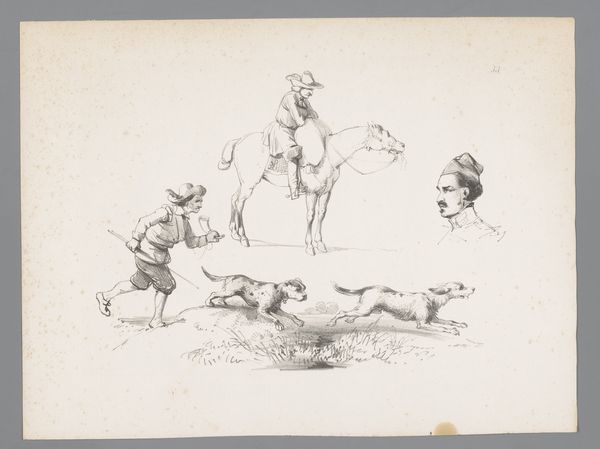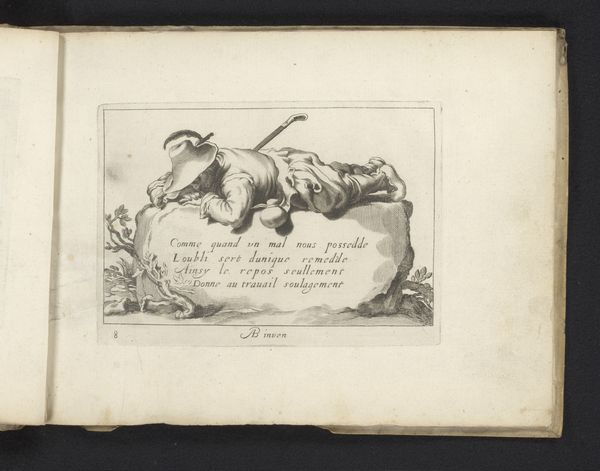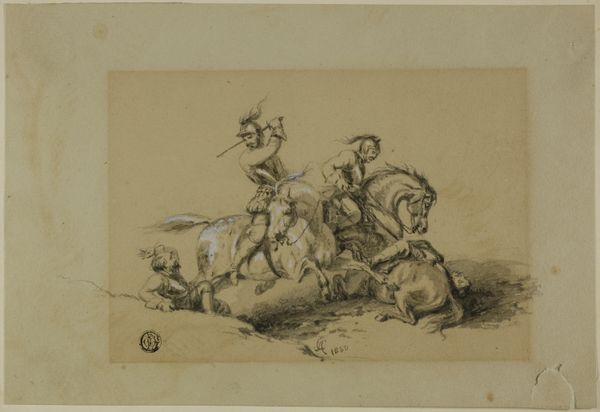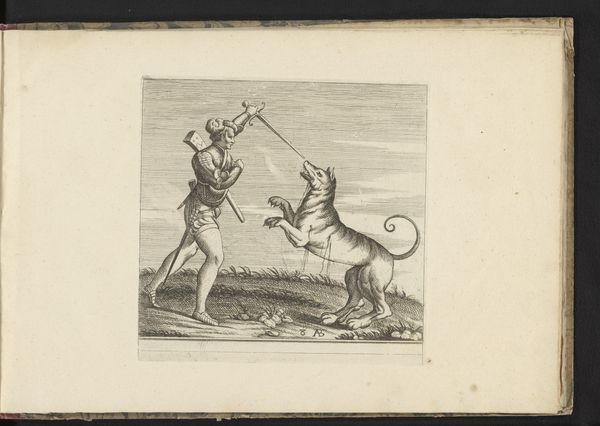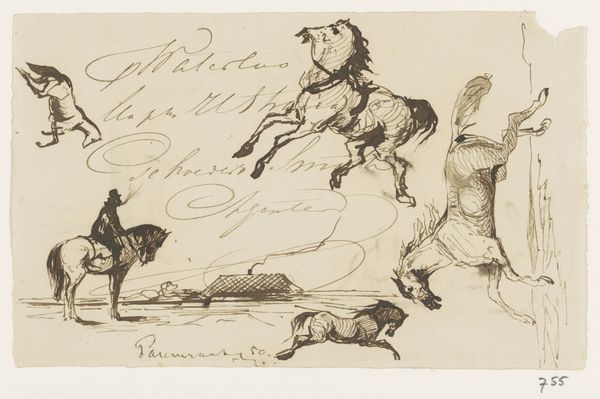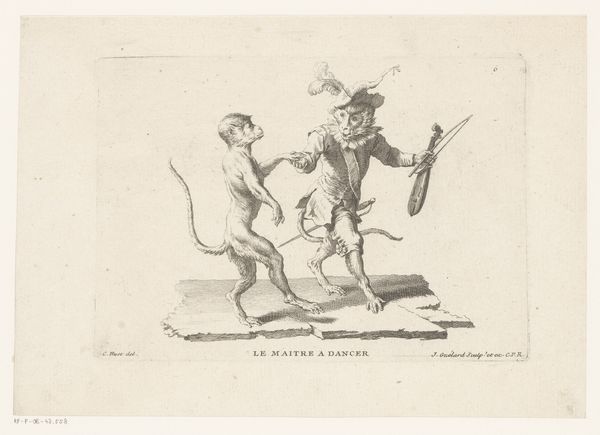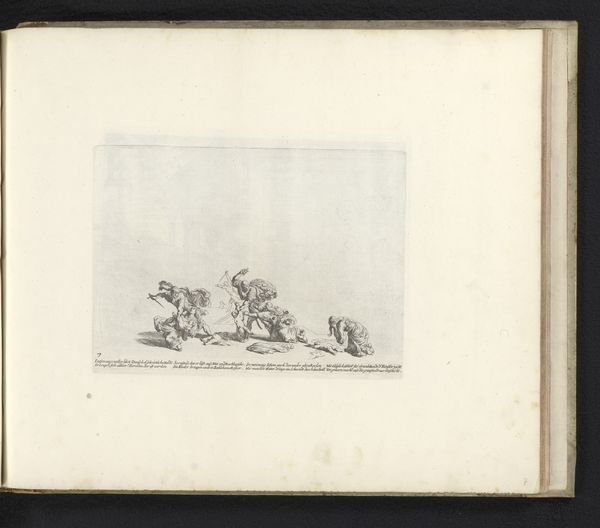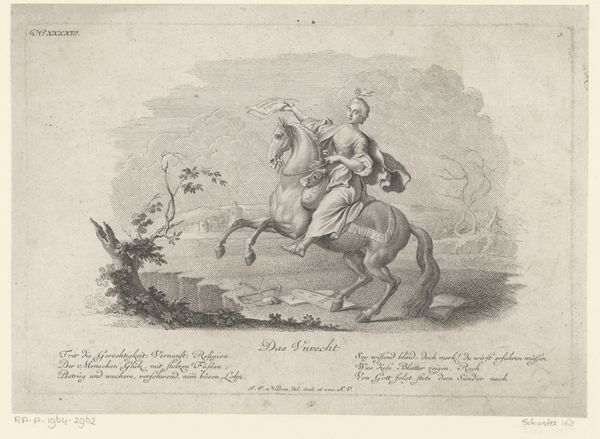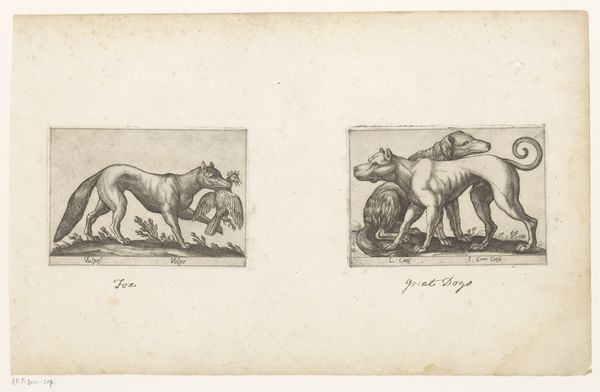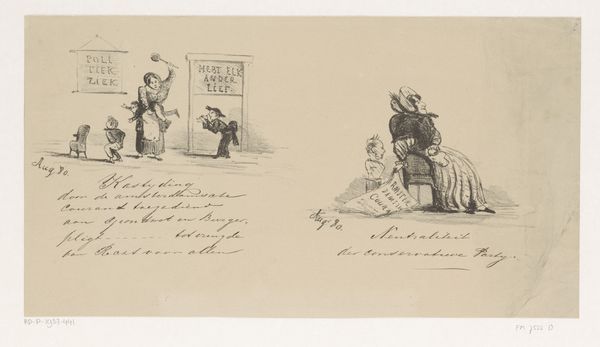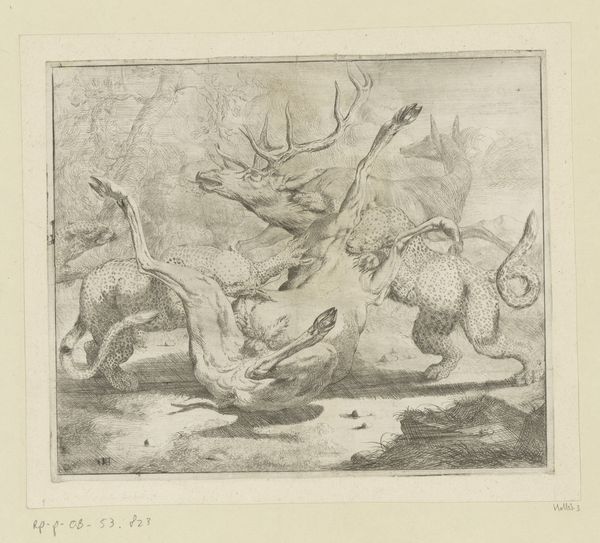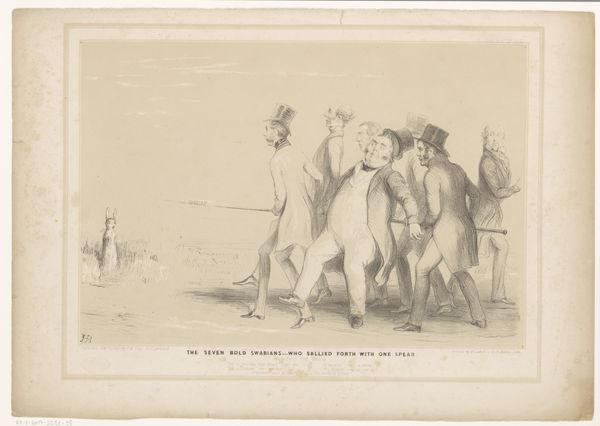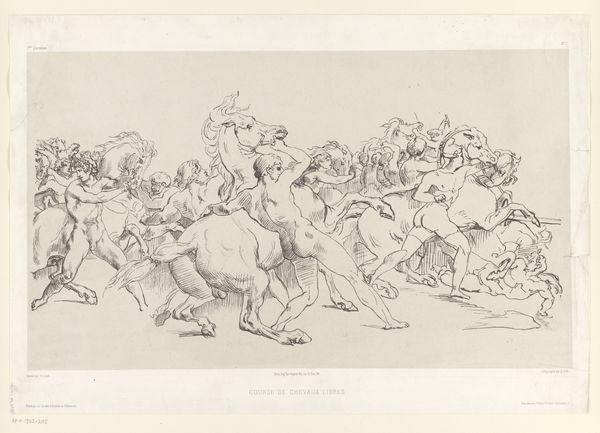
drawing, print, etching
#
drawing
#
narrative-art
# print
#
etching
#
figuration
#
ancient-mediterranean
#
history-painting
Dimensions: height 180 mm, width 238 mm
Copyright: Rijks Museum: Open Domain
Curator: We’re looking at an etching entitled "Sculpturen van een Amazone te paard en een Romeinse soldaat te paard," or “Sculptures of an Amazon on Horseback and a Roman Soldier on Horseback," dating from 1538 to 1641. Editor: There’s a definite tension here, wouldn’t you say? A sort of standoff, perhaps even a veiled threat expressed in the upward thrust of both horses, although that sword obviously heightens the drama quite a bit. Curator: Absolutely. Consider how the artist composes the scene. The stark, symmetrical division focuses our attention not on narrative, but on form. Note how the horses are near mirror images, yet subtly distinct. Their posture invites formal comparisons across their structure: leg position, riderly adornment, each angle in its relation to its specular variant on the other side of the division. The piece is not activated by its figures or representational concerns. The forms themselves dictate the reading. Editor: Well, from my perspective, those figures tell a vivid story. We see the Amazon, a symbol of untamed strength, juxtaposed with the Roman soldier, representing the disciplined, organized empire. The shield in his hand could carry his family's symbol and speak volumes. His sword implies conflict—an impending battle between differing worlds and value systems. And isn't there something significant about both being equestrian figures? A certain shared nobility, despite their opposing allegiances? Curator: Possibly. However, by understanding it from a structural perspective, consider that those symbols, while providing some interest to be sure, serve to act primarily as compositional elements, as pieces for a dynamic contrast rather than any narrative import. The tension and symmetry, that's what stays. Editor: Even so, it’s compelling to consider the work as a commentary on power, perhaps even a lament for lost ways of life replaced by empires—or maybe a tribute. Curator: Ultimately, the arrangement of those two forms locks the reading within a space that transcends specific cultures. It brings us face-to-face with formal oppositions. Editor: Perhaps that opposition allows space for myriad narratives. History’s palimpsest, with cultural memories ever layering, all coalescing within a formal echo.
Comments
No comments
Be the first to comment and join the conversation on the ultimate creative platform.
